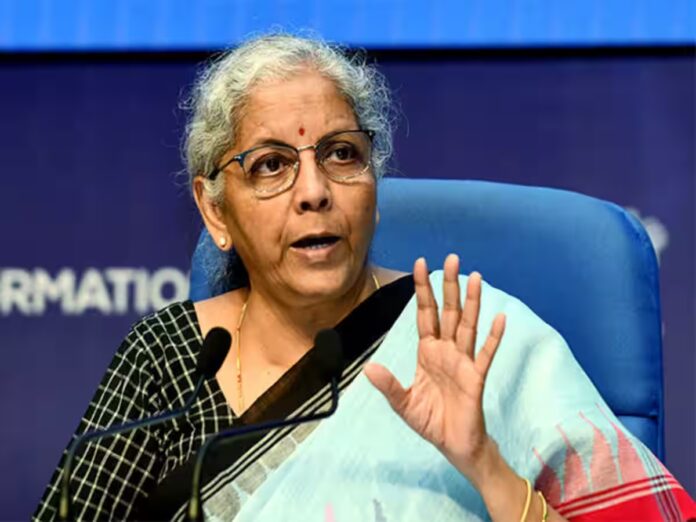Nirmala Sitharaman Faces Criticism: Challenges in Attracting Investment to India
A recent video of Finance Minister Nirmala Sitharaman, in which she questions why foreign multinational corporations are not investing in India, has sparked extensive debate on social media and within economic circles. This is not the first time Sitharaman has raised such questions; five years ago, she similarly inquired of Indian companies why they hesitated to invest domestically. These repeated appeals have led some to scrutinize India’s economic environment and the government’s approach to fostering investment.
Critics argue that Sitharaman’s ongoing calls for investment reveal deeper, structural challenges within India’s economy. Issues such as regulatory uncertainties, high tax burdens, and stringent compliance costs are cited as significant deterrents to both domestic and foreign investors. Despite efforts by the government to position India as a prime business destination, a lack of substantial private investment suggests these hurdles continue to impact investor confidence.
Responses to the video highlight growing discontent among economists, business leaders, and even political figures who feel Sitharaman’s approach falls short in addressing core economic concerns. While the government has introduced incentives such as tax cuts for specific sectors to stimulate investment, critics believe that these measures only address surface-level issues. Underlying challenges—such as India’s complex regulatory framework and inconsistent policy landscape—continue to create an unpredictable business environment, potentially discouraging long-term investment commitments.

On social media, many users have voiced frustration, with some harshly critiquing Sitharaman’s economic policies. Veteran politician Subramanian Swamy added to the criticism by labeling her as “the dumbest finance minister in the history of the world,” while other users echoed similar sentiments. These comments, though severe, reflect genuine concerns about the current direction of India’s economic policies and their effectiveness in creating a growth-conducive environment.
One key issue often pointed out is the gap between policy announcements and on-the-ground execution. While policies may appear promising, businesses sometimes encounter obstacles when trying to operate within India’s regulatory framework. High compliance costs, bureaucratic red tape, and policy ambiguities often lead to delays and increased operating costs, making India less competitive than other emerging markets. For many investors, the cost-benefit analysis of entering the Indian market does not yield favorable results, particularly when they compare it to more streamlined regulatory environments elsewhere.
Furthermore, experts argue that simply reducing corporate taxes may not be enough to boost investment. India’s economic landscape requires more comprehensive reforms aimed at simplifying business procedures and improving policy consistency. Additionally, critics believe that current measures lack focus on demand-side stimulus—an essential factor for sustaining economic growth. Without robust consumer demand, businesses may be hesitant to expand operations, regardless of tax incentives or eased regulations. For a more conducive environment, they argue, economic policies must work towards stabilizing demand alongside creating an investor-friendly framework.
Amidst this ongoing debate, Sitharaman’s approach has also faced scrutiny for not addressing the economic impact of high inflation and rising unemployment. While these factors directly affect consumer spending power, which in turn impacts business growth, critics argue that the government’s policies have not fully tackled these underlying issues. In addition, limited focus on sectors such as healthcare, education, and manufacturing—key drivers of employment and growth—has led to skepticism regarding the government’s long-term economic strategy.
Public sentiment, as observed on social media, indicates widespread concern over these challenges. Comments and discussions on platforms like Twitter and Facebook reflect the frustration of citizens who believe that India’s economic policies need to address fundamental structural issues rather than solely promoting short-term investor incentives. This dissatisfaction has been amplified by statements from prominent figures like Swamy, who argue that ineffective economic management is limiting India’s growth potential.
In response to these criticisms, supporters of Sitharaman’s policies argue that economic reform is a gradual process. They highlight the steps taken to improve infrastructure, promote digitalization, and encourage startup growth. However, critics counter that while these efforts are commendable, they must be supported by a consistent and transparent policy framework that fosters confidence in India as a stable and profitable investment destination.
In conclusion, the viral video of Sitharaman’s appeal to foreign investors has triggered a renewed examination of India’s economic environment. While the government has made efforts to attract investment, critics believe that deeper reforms are necessary to address the complex challenges facing India’s economy. Moving forward, balancing pro-investment policies with structural improvements will be essential for creating a sustainable and growth-oriented economic landscape in India. As discussions around these issues continue, the focus remains on how future policies will address the critical areas of regulatory clarity, demand stimulation, and long-term economic stability.

